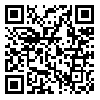BibTeX | RIS | EndNote | Medlars | ProCite | Reference Manager | RefWorks
Send citation to:
URL: http://refahj.uswr.ac.ir/article-1-1129-en.html
Introduction: Controversy over the relationship of gender inequality with health and its dimensions is not new concept for many years researchers have been discussing whether inequality could determine different levels of health in men and women. This paper examined the linkage between gender inequality in four key domains, economy, education, politics, and health and prevalence of HIV.
Method: In this study secondary analysis as a basic method was used , related data were available in “The Global Gender Gap Report 2006” and UNAIDS statistics unit, the sample contains 115 nations from all around the world.
Findings: Findings have shown that out of four sub indexes of gender gap index, only education attainment and its indicators, exception female net primary level enrolment over male value, have statistically significant correlation with HIV prevalence. Female gross tertiary level enrolment over male value showed the strongest correlation with criterion variable (r= -0.351).
Discussion: Consequently, women more attainment to education, especially higher than primary education, might significantly predict reduce of prevalence of HIVReceived: 2013/08/13 | Accepted: 2013/11/23 | Published: 2013/11/23
| Rights and permissions | |
 |
This work is licensed under a Creative Commons Attribution-NonCommercial 4.0 International License. |





